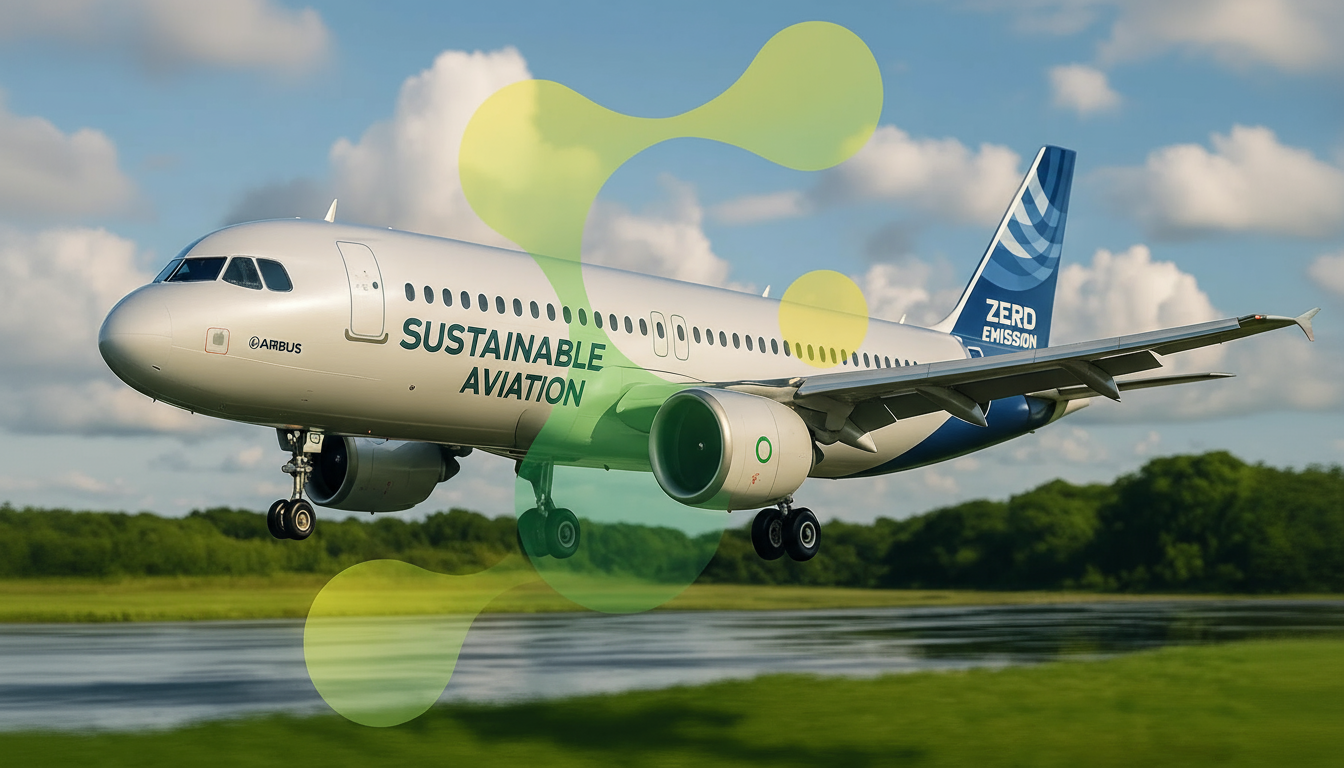The global aviation industry faces its greatest challenge since the introduction of the gas turbine: completely decarbonizing commercial flight operations. In this context, Airbus is emerging as a leading player with the ZEROe project, an ambitious initiative that promises to revolutionize air transportation through hydrogen propulsion. Although the timeline has recently been adjusted, the technological advances achieved and the ecosystem of partnerships built demonstrate that zero-emission aviation is no longer science fiction but a technological inevitability.
The strategic dimension of the ZEROe project
Launched in September 2020, the ZEROe project represents a strategic investment by Airbus to develop the first zero-carbon commercial aircraft. The initiative initially projected entry into service by 2035, but in February 2025, the company announced a significant schedule adjustment, postponing commercial operations to between 2040 and 2045.
This postponement, far from representing a setback, reflects strategic maturity. Airbus acknowledged that the simultaneous development of propulsion technologies, fueling infrastructure, and regulatory frameworks requires more time than initially estimated. Guillaume Faury, CEO of Airbus, emphasized that the necessary infrastructure is not progressing at the pace initially anticipated, especially in the industrial-scale production of green hydrogen.
Airbus's most recent strategic decision solidifies fuel cell technology as its preferred propulsion method. This system converts hydrogen and oxygen into electricity through a chemical reaction, producing only water vapor as a byproduct. The current design calls for four 2-megawatt electric motors, powered by fuel cell systems supplied by two liquid hydrogen tanks.
Technological milestones and proof of concept
The technical progress achieved by Airbus validates the viability of the concept. In June 2023, the company successfully completed tests of a 1.2-megawatt fuel cell system in Germany at the Electric Aircraft System House, the most powerful test ever conducted in aviation for large aircraft. This milestone was followed, in late 2023, by the first full activation of the integrated hydrogen propulsion system.
The Blue Condor project represents another significant advancement. In November 2023, Airbus conducted the first fully hydrogen-powered flight using a modified Arcus-J glider over Nevada. The main objective was to study the condensation trails produced by hydrogen combustion and compare their emissions with conventional kerosene engines.
The data collected is crucial: although hydrogen combustion eliminates CO₂ emissions, it produces approximately 2.6 times more water vapor than kerosene and still generates nitrous oxides. Fully understanding the climate impact of these non-CO₂ emissions is critical to validating the technology's environmental benefits.
Technical challenges and innovative solutions
The transition to hydrogen presents substantial engineering challenges. Hydrogen has a significantly lower energy density per volume than kerosene (8.5 MJ/L versus 35 MJ/L), requiring a larger storage volume. Furthermore, liquid storage requires cryogenic tanks that maintain temperatures of -253°C or lower.
Airbus has established ZEROe Development Centers in Germany and France dedicated exclusively to developing economically viable cryogenic tanks. In collaboration with Air Liquide Advanced Technologies, the company developed the Liquid Hydrogen BreadBoard in Grenoble, France, to address the challenges of handling and distributing liquid hydrogen during flight. Integrated ground tests are planned for 2027 in Munich.
Thermal management represents another critical challenge. Researchers have developed an innovative approach in which liquid hydrogen simultaneously serves as fuel and cooling medium for critical power systems, optimizing the aircraft's overall energy efficiency.
Ecosystem of partnerships and infrastructure
The commercial viability of hydrogen aviation transcends the technological capabilities of any single company. Airbus has methodically built a comprehensive network of strategic partnerships.
In October 2020, the company created Aerostack GmbH, a joint venture with ElringKlinger (90% Airbus, 10% ElringKlinger), specifically to develop aeronautical fuel cell stacks. In June 2025, during the Paris Air Show, Airbus and MTU Aero Engines signed a memorandum of understanding to jointly advance fuel cell propulsion.
The "Hydrogen Hubs at Airports" program already has more than 220 signatory airports in 13 countries, including Canada, France, Germany, Italy, Japan, Norway, and the United States. Additionally, Airbus is actively engaging with more than 10 airlines, including Delta Air Lines, Scandinavian Airlines, EasyJet, and Korean Air, to jointly explore the future deployment of hydrogen-powered aircraft.

Economic viability and regulatory support
Studies commissioned by the Clean Sky 2 and Fuel Cells & Hydrogen 2 Joint Undertakings initiatives indicate that hydrogen could add less than €18 per passenger on short-haul flights, while reducing climate impact by 50% to 90%. This cost-effectiveness, combined with the potential for green hydrogen production at decreasing costs, supports long-term economic viability.
Regulatory support is steadily advancing. In December 2024, the FAA published its Hydrogen-Fueled Aircraft Safety and Certification Roadmap, setting targets for short-term actions through 2028 and medium-term actions between 2028 and 2032. In parallel, EASA held the first international workshop on hydrogen-fueled aircraft certification.
The Clean Aviation program, part of Horizon Europe, is providing substantial funding. The third call for proposals, announced in February 2025, offers total European Union funding of up to €380 million, corresponding to €950 million of total research effort.
Dual strategy: SAF and Hydrogen
Airbus pragmatically adopts a dual strategy for decarbonization. While developing hydrogen technology as a long-term solution, the company simultaneously advances Sustainable Aviation Fuel (SAF) to reduce emissions in the short and medium term.
At the Airbus Summit 2025, the company announced plans for a next-generation single-aisle aircraft capable of operating on up to 100% SAF, with entry into service projected for the second half of the 2030s. This approach enables continued progress in decarbonization as hydrogen technologies fully mature.
Perspectives and conclusion
The postponement of the ZEROe timeline to 2040-2045 reflects not an abandonment of commitments, but strategic realism about the magnitude of the challenges. As Bruno Fichefeux, Head of Future Programs at Airbus, stated: “Hydrogen is at the heart of our commitment to decarbonizing aviation. While we have adjusted our timeline, our dedication to hydrogen-powered flight remains unchanged.”
The next critical milestones include integrated ground testing in Munich in 2027 and the continued maturation of storage, distribution, and propulsion technologies. With more than 220 airports engaged, dozens of partner airlines, and substantial funding from the European Union, the necessary ecosystem is being methodically built.
For Brazil, with its immense potential for producing green hydrogen through renewable energy and a significant presence of Airbus in the country, hydrogen aviation represents a strategic opportunity for leadership in the global energy transition.
The era of zero-emission commercial aviation, while further away than initially projected, is on a viable trajectory toward commercial reality.

